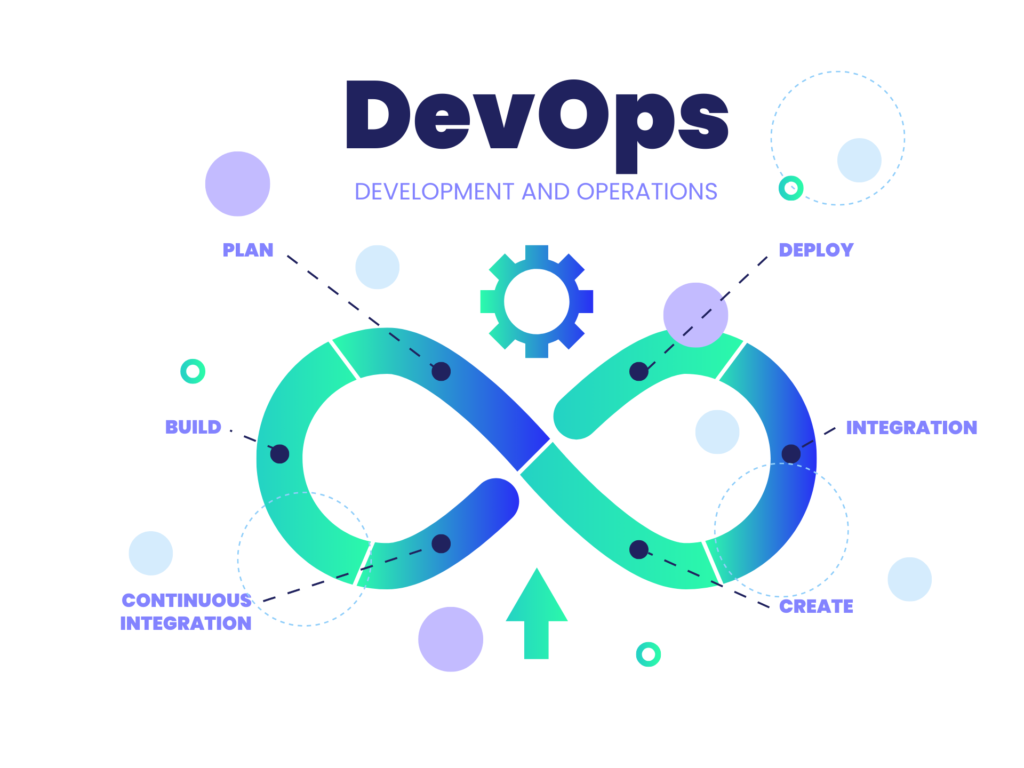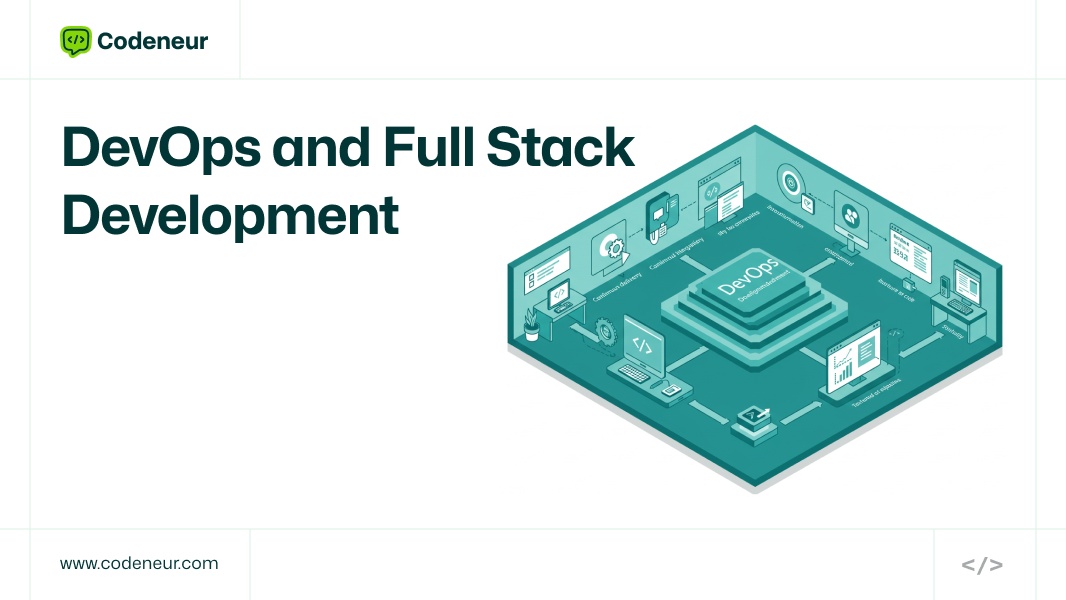DevOps and Full Stack Development: A Symbiotic Relationship focuses on the fact that there is an influential association between these two fundamental methods used in the process of developing software.
Full stack development is simply a way to develop front and backend applications. Diverse skills are needed; hence there is no differentiation because it is so well-integrated.
In the case of DevOps, there is collaboration between development and operation teams and it is said to simplify and automate work processes.
This blog discusses how the implementation of DevOps practices can dramatically change full-stack development through increased deployment speed, consistent quality, and better communication.
Let’s find out how this powerful collaboration can change your development projects and lead to innovative, high-performance applications.
Knowing Full-Stack Development
DevOps and Full Stack Development: A Symbiotic Relationship begins with the definition of full-stack development. It is a process of developing both the front-end and back-end parts of a web application, thus allowing developers to work on every layer of the software stack.
Full-stack development key areas include
- The frontend by which user interfaces are produced using HTML, CSS, and JavaScript.
- Backend, in which the actual logic of the server-side management is often used together with Node.js, Django, or Ruby on Rails.
- The database is the area where the true data is stored and fetched, like MySQL or MongoDB.
- The APIs connect the front-end and back-end, allowing data exchange between them without causing discomfort.
Obviously, for DevOps and Full Stack Development- A Symbiotic Relationship, the importance lies in collaboration between layers. Effective communication and integration must be achieved between layers and functions:
- Front-end,
- Back-end,
- Databases and
- APIs.
The knowledge of these components and their relationships will enable teams to use DevOps practices to improve collaboration and streamline the development process for the sake of creating better and more efficient applications.
What is DevOps?
DevOps and Full Stack Development: A Symbiotic Relationship begins with an idea that one needs to grasp first – an understanding of DevOps. For some, it means a cultural and technical movement aimed to bring collaboration between the teams of development and operations, while for others, DevOps has to break the silos of silos, improve the culture of shared responsibility, and bridge the gaps between people.
Core DevOps principles include
- Automation,
- Collaboration,
- CI/CD.
They require smooth workflow patterns in order to make things easier, efficient, and in the shortest timescales possible from development to production.
The key stages of the DevOps lifecycle include
- Planning,
- Development,
- Testing,
- Deployment,
- Monitoring, and
- Feedback.

Each of these stages is crucial for ensuring that software is delivered reliably and quickly and that the ability to adapt to changing requirements is guaranteed.
In the concept of DevOps and Full Stack Development: A Symbiotic Relationship, automation is important so that the process of de-duplication of time-consuming processes can be dealt with in such a manner that the teams are encouraged to focus on innovation and creativity.
Team collaboration nurtures shared goals, but CI/CD practices also help the team to carry out updates more frequently so that faster releases are managed. All these would enable the organizations to develop much higher-quality applications and, above all, better user experience.
Benefits of DevOps with Full Stack Development
Benefits of DevOps with Full Stack Development: A Symbiotic Relationship. There are numerous benefits associated with the combination of DevOps and Full Stack Development that can prove very beneficial for the overall process of software development.
One of the most important advantages is that it helps develop in cycles faster. As it simplifies the whole development process by automating the activities and implementing the practices of CI/CD, teams can decrease the time to deploy from developing. Therefore, features get delivered to users sooner so that there is quicker feedback and iteration.
Improved Collaboration. DevOps brings the teams together, breaking down the silos of development and operations teams, allowing for a culture to emerge. It enhances communication and feedback loops, allowing effective problem-solving and a common understanding of project goals, hence making more cohesive and efficient workflows.
This also leads to a Higher Quality Code. When continuous testing and integration are at the center, teams can easily catch bugs before the beginning of the development cycle. The use of automated testing frameworks ensures code quality along the process chain, therefore, reducing issues in the production environment.
Combining the Synergy of DevOps and Full Stack Development
In a Symbiotic Relationship, speed increases in development cycle speed, collaboration of the developers, and advanced quality code is produced for the resultant software and happiness to users.
Important DevOps Practices for Full Stack Developers
In DevOps and Full Stack Development: A Symbiotic Relationship, there are certain essential DevOps practices a full-stack developer needs to make use of.
Version Control Systems
These are really basic and Git is the primary tool in which the changes are made. The best practices include strategies regarding branching and commit messages which actually help in collaboration and even in maintaining the project history.
CI/CD
CI/CD is another very important practice. The development of CI/CD pipelines will test and deploy changes in code bases, thereby considerably accelerating the cycle of development.
Tools and platforms such as Jenkins or GitHub Actions enable this to be achieved with ease. Ensure that any changes made in the code will then automatically get tested and deployed.
Among all the important concepts in this DevOps and Full Stack Development: A Symbiotic Relationship, another important topic is
Infrastructure as Code or IaC.
Using code to manage infrastructures, provides consistencies and scalabilities as well. Through tools, such as Terraform, and Ansible, developers get to automate the setup configuration of their environments.
Finally, Monitoring and Logging is the last and most important feature to maintain the application’s performance. With Prometheus and ELK Stack, it provides insights about application behavior, which would allow teams to identify and optimize issues.
With these key DevOps practices, full-stack developers will have improved collaboration, efficiency, and code quality.
Real-Life Examples
Through real-life examples, the study of DevOps and Full Stack Development will reveal how the companies have implemented this relationship of DevOps.
One very important example is that of Netflix. It has a deep and vibrant DevOps culture. The company is implementing continuous delivery and automated testing.
Thus, it can deploy an update multiple times within one day. This permits improving user experience and high-performance behavior.
Their focus is on a microservices architecture with completely independent development. Deployment can be regarded as embodying fully effective DevOps practices within full-stack development.
For instance, the adoption of DevOps principles helped Etsy address its problems which could easily have been deployed in its services. Therefore, this has improved an organization’s efficiency and has released rapid features to its customers reducing the real time spent on deploying it.
Development teams interact with operations teams; hence collaboration increases in delivery solutions for giving responses through an agile system to a customer’s criticism.
These include cultural collaboration in the work processes and spending on automation tools. An organization with really combined development experience into their model showed accelerated deployment, code quality high, and higher overall performances.
These should be placed on the faces to exhibit results and conclusions regarding DevOps and full stack development. Symbiotic relations and innovation for success within the modern competitive world.
Challenges and Solutions
Integrating DevOps and Full Stack Development: A Symbiotic Relationship brings numerous challenges to teams. The cultural resistance within the organizations makes it difficult for teams that work in silos and become challenging to encourage collaboration, making DevOps practices not effective.
The second is the complexity of managing many technologies across the full stack, which causes inconsistencies in deployments and difficulties in code quality maintenance.
Cross-function and cross-functional teams include, the development as well as operations personnel will thus promote a collaborative culture for these organizations to have focused strategies in managing to effectively respond to all kinds of challenges.
To improve efficiency, training programs coupled with workshops can facilitate teamwork. Since silos often present huge obstacles to people interaction hence leading to openness on some issues.
In addition, uniform tools and practices across the full stack make it easy to control. The processes can be streamlined with continuous integration and deployment pipelines. By reducing the opportunities for making mistakes in the process of deployment.
Therefore, the teams will approach closer to improving the synergy between DevOps and Full Stack Development: A Symbiotic Relationship. With this, the result is increased efficiency and innovation along with the quality of the software products.
Conclusion
In a nutshell, DevOps and Full Stack Development: A Symbiotic Relationship is an important concept. This allows for collaboration, accelerates the pace of development, and enhances code quality.
Through DevOps practices, projects get completed successfully as per user demands. Thus, readers are requested to go through various tools and methodologies. It can be adopted in their development process with the help of DevOps.
If you want deeper knowledge about this, you can opt for hands-on training and practical learning through Codeneur.
Key Takeaways
- Full-stack development means front-end and back-end web application development.
- DevOps enables better communication between development and operations, enhancing software delivery.
- DevOps processes such as automation, CI/CD, and monitoring increase the speed of development and quality of software.
- DevOps facilitates dismantling silos, encouraging better communication and accelerated iterations.
- Case studies (Netflix, Etsy) show the effectiveness of DevOps in full-stack development.
- Git, Jenkins, Terraform, and Prometheus are necessary tools for efficient DevOps deployment.
- Challenges consist of cultural resistance and technology complexity, but solutions come in the form of training and unified tools.
- DevOps and full-stack development combined drive innovation, efficiency, and enhanced user experiences

